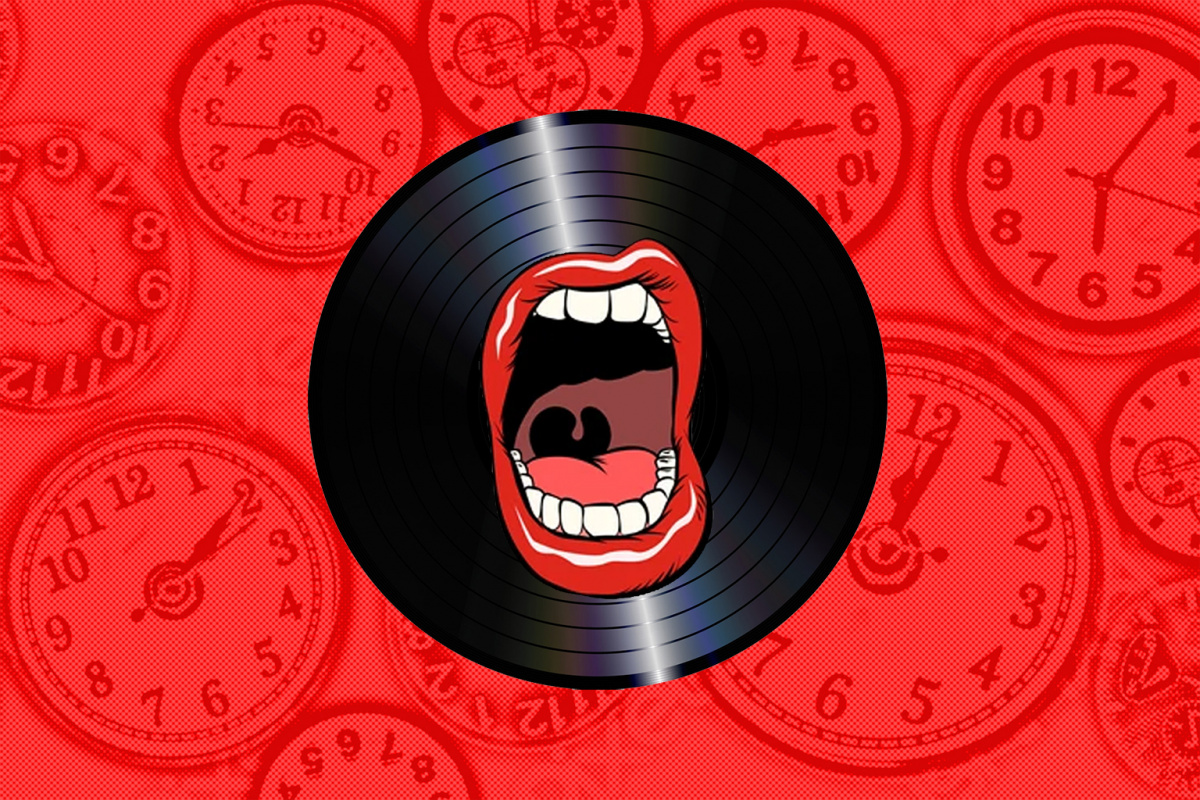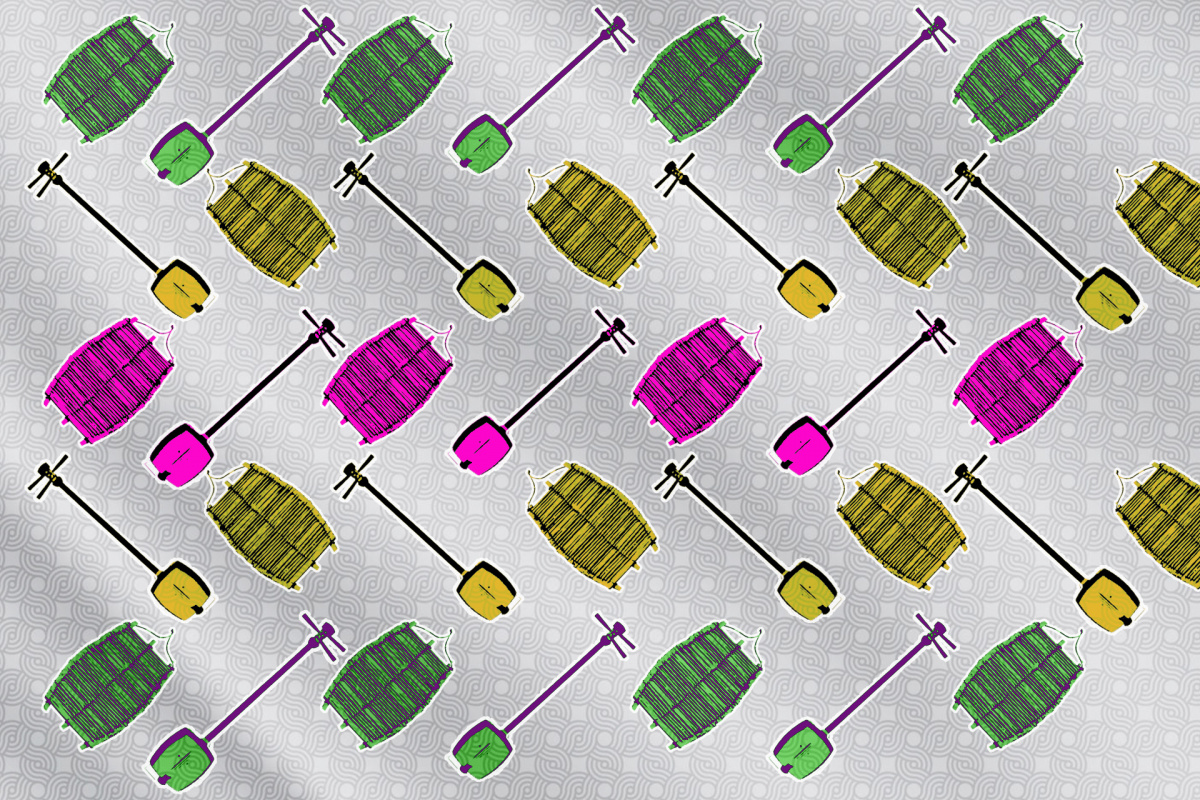Urban Legends
Not only were Kalamashaka the first break-out Swahili rap act in Kenya, they also launched a movement of conscious, Afrocentric rap inspired by the likes of Public Enemy, back in the 1990s in Nairobi’s Eastlands. In this podcast, original member Kamaa aka Githingithia speaks to the writer bethuel muthee about the Nairobi that inspired his music.
A podcast produced by Raphael Kariuki (DJ Raph)
Interview and transcript by bethuel muthee
Listen and Follow on All Platforms
Extended Transcript
by bethuel muthee
Johnny Vigeti is the one who introduced the rest of the crew on the intro to the 1997 banger, «Tafsiri Hii»: «Straight from the Mau Mau Camp in the red corner, Muliro the Oteraw. In the blue corner, Kamau Githingithia. I’m the referee, Mr. Vigeti, kutoka Kalamashaka». The song was a seismic event that shifted the cultural landscape. A few years later, Kamaa would remind us on «Mangirima»: «nilizaliwa ‘78 Kenya ikagongwa na earthquake/ si coincidence ku-nicknamiwa Githingia 98». There were two earthquakes with a magnitude larger than 4.0 on the Richter scale in 1978. The biggest, felt on the evening of April 5, had a magnitude of 4.7 with its epicenter in Kajiado. Kamaa’s wasn’t a lazy brag when he claimed to be an earthquake, he shook the ground on which he stood with his radical rhymes. I got to sit down with the elder in his home, a place he calls paradise, to understand who he is and how he became a voice for revolution.
Kihumo/Epicenter: Where the Ground Started Rumbling
Kamau Ngigi was born in 1978 in Lari, Kiambu. He was born into a family of nine siblings and life in Lari was good until their father lost his job. The family moved from their good home in Lari to a shack in Ngarariga. Kamaa was at first oblivious to the change, since all the children continued to play together. Soon, the relationship between his parents deteriorated and they separated, the children staying with their mother. Kamaa and his brother Kang’ethe (MC Kah) ran away from home and came in search of their father, whom they caught up with and later went with to Dandora. Kamaa, a mediator at an early age, was able to convince his mother to get back with his father. The rest of the family followed Kamaa and Kah to Dandora.
When the family moved to Dandora in 1988, the streets were all lit and every home had a garbage can that was cleared by the City Council. «Hizo siku watu walikuwa wanatoka Karen wanakuja Dando kukunywa, wanatoka Buru. Hakukuwa na hiyo stigma». Kamaa was a student at Dandora Primary, a class behind Abbas Kubaff, who was the best student in Dandora and even represented Kenya in a quiz competition in South Africa. Perpetually curious and inquisitive, Kamaa was not satisfied with easy answers and his father, an academic, encouraged him, but this did not go down well with others. «Watoi wangekuja waniambie Mungu yuko kwa rosary ndio maana inawaka kwa giza nawaambia ni uwongo, hawakunipenda.» The neighborhood children were asked to stop playing with him. Isolated and still curious, he found himself peeping into a gym where there was tae kwon do. The coach noticed his interest and asked him to join. This became a haven for Kamaa, who would leave school and immediately head to the gym. Long before his name appeared in the media as a third of Kenya’s most important hip hop group, he made his name in sports. By the time he joined St. Theresa High School he was a black belt and was coaching the school team in form two.
After attending a breakdance film with his father, Kamaa immediately sensed there was a whole other world out there. When KTN started airing «Yo! MTV Raps» hosted by Doctor Dre and Ed Lover, there were some songs with which Kamaa could relate. «After 93 ni kama gava iliamua kucheza ki-Machiavelli, kuinstill fear…Hiyo time makarao walijazwa mtaani kukaanza kukuwa na Zion Train». When he watched rap videos talking of the violence in Compton, he saw Dando. The riots in Watts after the murder of Rodney King brought memories of Saba Saba. Hip hop shattered the facade of perfect America created by (mainly white) pop culture. In the Afrocentric medallions of LL Cool J and Queen Latifah he saw the flag of the Kenya Land and Freedom Army.
For a lot of people, mtaani, rap was still foreign and they associated it with MC Hammer and Vanilla Ice, «toeni hizo ma yoyo, ma bow wow! Eka reggae»! But here was Kamaa with his durags and corn rows, a cool guy, plus he has a black belt. There weren’t many places that played hip hop in the city but Kamaa would go to Jungle in City Park and listen to DJ Pinye and DJ Nijo. His first experience of reggae had left him shook. See, Club Brilliant along Murang’a Road was the base of King Lion Sound and though reggae is peace-praising music, reggae nights were scenes of unmatched violence. «Reggae ilikuwa ni mahali pa mang’aa… Si kuwa nimeona violence kama hiyo before». He stayed away and later started going for afternoon jam sessions at F2 where the music was a mix of everything.
Na Wasaani Wakakam Wakapatana: 3D Crew Till Infinity
Throughout his life, Kamaa has found solace in libraries. He would get away from school or home and find a place to be alone, or he went to a library. One day while at the Dandora Library he saw two other guys who were rapping. The two were Roba (Robert Matumbai) Oteraw and Johnny (Vitu Mbaya) Vigeti. They told the young Kamaa that they rapped, and he told them he was also a rapper. Alignment. Even now Kamaa says he has never connected with anyone as much as he did with those two, as different as they were as individuals. «Where do you rap»? They told him about F2 competitions and he joined them the next Sunday. Being older, the two asked him to stay in school as Roba was about to join Kenyatta University. Roba’s room in KU would be a camp where Kamaa would stay when he was sent away from school for lack of school fees.
«Ungebonga kilami mtaani ulikuwa unauliza kuhandwa». The choice to rap in Sheng – an urban slang mix of Kiswahili, English and more – was conscious. Their message was about shifting away from colonial thinking. Three homies from Dandora going up against more experienced rappers like K-South Flava (Jerry Doobiez, KC, «na boy flani kutoka States» aka Bamboo). What they had that other crews didn’t have was dope rhymes in Sheng. They won battle after battle. After battle. They battled K-South several times. They now got into the club free; they were known and the crowd had accepted this strange new rap from 3D Crew.
One morning while in Roba’s room they saw an ad for a star search in a newspaper that was lying around, labda ilikuwa ya kufunga nyama. It was recent. There was a number and a nearby phone booth that they could call from. Wakaenda. They called and were told to appear that afternoon at Carnivore. Getting to town wasn’t a problem, they were known, they could ride free, though they had to find their way to Carnivore where they had never been. They got through the auditions. Dobbiez won. Anyone remember «mara ya kwanza kunywa Malibu si niliharibu…»? It was the same night. Kalamashaka might not have won, but they caught the attention of Tedd Josiah and went on to write an important chapter in Kenyan urban music.
Ni Wakati: The Unending Revolution
Kamaa’s poetry has been about revolution, the need to expand our consciousness, unshackling minds from colonial mentality, respect, and love for all. Sitting with him I ask him about the legacy of Kalamashaka and the need to change the world. His response, after a contemplative pause, is that it is still the time (ni wakati) for revolution. Nothing has changed from the days when they released the incendiary album featuring songs such as «Moto». The music is out there for all who want to listen. It is always a good time to listen. Listen to the music, listen to the world around, listen for that sound within you that asks to make a better day. It’s getting dark as we wind up our conversation plus there are hippos in the area. Kamaa says there’s so much to be done. There is hope.
This article is part of the virtual exhibition «Norient City Sounds: Nairobi» curated and edited by Raphael Kariuki and Kamwangi Njue.
Biography
Biography
Shop

Published on May 06, 2022
Last updated on August 25, 2022
Topics
Why New Yorks’ underground doesn’t give a fuck about Trump or why satirical rap in Pakistan can be life threatening.
From Beyoncés colonial stagings in mainstream pop to the ethical problems of Western people «documenting» non-Western cultures.
Special
Snap


